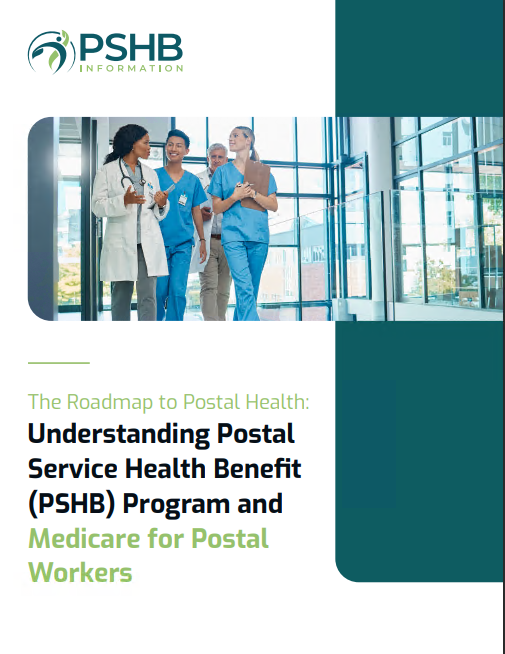Key Takeaways:
-
Family health coverage under the PSHB ensures that postal employees and their dependents stay protected during medical emergencies and routine care.
-
Postal employees should familiarize themselves with eligibility, enrollment periods, and the coverage options available to safeguard their families’ health.
Family Health Coverage Under PSHB: What Postal Employees Should Know About Keeping Loved Ones Protected
The Postal Service Health Benefits (PSHB) program is designed to provide postal employees with comprehensive health coverage, including options to extend these benefits to their family members. As a postal employee, ensuring that your loved ones have health insurance is not only crucial for their well-being but also for your peace of mind. Understanding the available options, eligibility requirements, and how the PSHB works is key to keeping your family protected under this program.
What Is the Postal Service Health Benefits Program?
The PSHB program, which launched on January 1, 2025, serves as a replacement for the Federal Employees Health Benefits (FEHB) program for postal employees and retirees. This program offers similar benefits but is exclusively tailored for postal service employees and their dependents. It was established under the Postal Service Reform Act of 2022 to help ensure that all eligible postal workers, retirees, and their families have access to affordable health coverage.
Coverage Options Available Under PSHB
PSHB offers a wide range of health plans that cover medical services, prescription drugs, preventive care, and more. As a postal employee, you can choose a plan that best suits your family’s medical needs. These plans typically include coverage for:
- Routine doctor visits
- Specialist appointments
- Emergency care
- Hospitalizations
- Maternity care
- Pediatric care for children
Since every family’s health needs vary, it’s important to evaluate the plan options available to you and your dependents. Keep in mind that while the coverage under PSHB is similar to what was previously offered through FEHB, the PSHB caters specifically to postal employees and might have slight variations in benefits or provider networks.
Eligibility for Family Coverage
Postal employees can extend their health benefits to eligible family members. Under the PSHB, eligible dependents include:
-
Spouses: Legally married partners are eligible for coverage.
-
Children under 26: Your biological, adopted, or stepchildren under the age of 26 can be covered, regardless of their marital status. This includes any children for whom you are the legal guardian.
-
Disabled children: If you have a child over the age of 26 who is disabled and incapable of self-support, they may still qualify for coverage under your PSHB plan.
It’s essential to keep your family structure and any potential changes in mind, as life events such as marriage, divorce, birth, or adoption can affect your eligibility for covering dependents.
Key Enrollment Periods
To ensure that your family members are covered under the PSHB, it is vital to be aware of key enrollment periods. Missing these deadlines can lead to gaps in coverage or difficulty enrolling dependents. There are a few enrollment periods to keep in mind:
-
Open Season: Each year, postal employees can review and change their health plans during the designated open season. This usually takes place in November and December. Open season is the perfect opportunity to evaluate whether your current plan is still suitable for your family’s needs or if switching plans would be more beneficial.
-
Qualifying Life Events (QLE): Outside of open season, you may still be able to enroll or make changes to your plan if you experience a qualifying life event. These include:
- Marriage or divorce
- Birth or adoption of a child
- Loss of other health coverage
Be sure to act quickly after a qualifying life event occurs, as there are typically time limits (usually 60 days) to make changes to your coverage.
What Postal Employees Should Consider When Selecting a Plan
Choosing the right health plan under PSHB can feel overwhelming, especially when considering the various needs of your family members. Here are a few factors postal employees should consider when selecting a plan:
Health Needs of Family Members
Every family has unique health concerns, whether it’s regular pediatric visits for young children, care for chronic conditions, or access to specialists. Understanding the specific medical needs of your family members will help you choose a plan that offers the right balance of coverage, provider options, and convenience.
For example, if a family member requires regular prescriptions or frequent visits to a specialist, you’ll want to ensure the plan offers adequate coverage for those services.
Provider Networks
Before enrolling in a plan, check the provider network to ensure your preferred doctors and healthcare providers are included. Some plans may limit access to certain providers or charge higher out-of-pocket costs for out-of-network care. Verifying this information will prevent unexpected costs and ensure continuity of care for your family.
Prescription Drug Coverage
Prescription drug needs can vary significantly between family members. Some plans offer more comprehensive coverage for prescriptions, while others may limit which medications are covered. Ensure that the PSHB plan you choose provides the necessary prescription drug coverage for all family members, especially if anyone requires ongoing medication.
Premiums and Out-of-Pocket Costs
While it’s essential to avoid focusing too much on cost alone, it’s still an important consideration when selecting a health plan. Consider the premiums you’ll pay, as well as any deductibles, copayments, or coinsurance. Keep in mind that higher premiums often correspond with lower out-of-pocket costs, while plans with lower premiums might require you to pay more for services as they are used.
Navigating the Transition from FEHB to PSHB
The transition from FEHB to PSHB has implications for postal employees and retirees, especially those who previously relied on the federal system for family coverage. With the introduction of PSHB, some employees may need to take extra steps to ensure their dependents are fully covered. The shift is especially relevant for retirees who are Medicare-eligible, as PSHB coordinates with Medicare coverage.
If you are approaching retirement or already retired, you should take special care to review how your family’s health coverage will be impacted. Retirees are required to enroll in Medicare Part B to maintain PSHB coverage. Ensuring that you and your dependents understand the coordination between PSHB and Medicare will help avoid any disruption in benefits or unexpected costs.
How to Keep Your Loved Ones Covered
Ensuring your loved ones remain covered under PSHB is relatively straightforward, as long as you stay informed and act during the appropriate enrollment periods. Here are a few practical tips to help you maintain your family’s health coverage:
-
Review your options annually: Even if your current plan works well, it’s a good idea to review your coverage each year during open season to ensure it still meets your needs.
-
Keep up with life changes: If you experience a life event, such as getting married or having a child, update your plan as soon as possible to include new dependents.
-
Track provider changes: Provider networks can change year to year. Make sure your preferred healthcare providers are still in-network before re-enrolling in the same plan.
By following these steps, you can be confident that your family will have continuous access to quality healthcare services.
Protecting Your Family’s Health Moving Forward
Postal employees have the benefit of enrolling in the Postal Service Health Benefits program, which offers comprehensive family health coverage. As the landscape of healthcare evolves, staying informed about your coverage options and making the right choices during enrollment periods is crucial for maintaining your family’s health and well-being. The transition from FEHB to PSHB marks a significant shift in how postal workers manage their health benefits, but with careful planning and understanding, it is possible to ensure that your loved ones are protected under this program.
Contact Information:
Email: [email protected]
Phone: 6155552345






